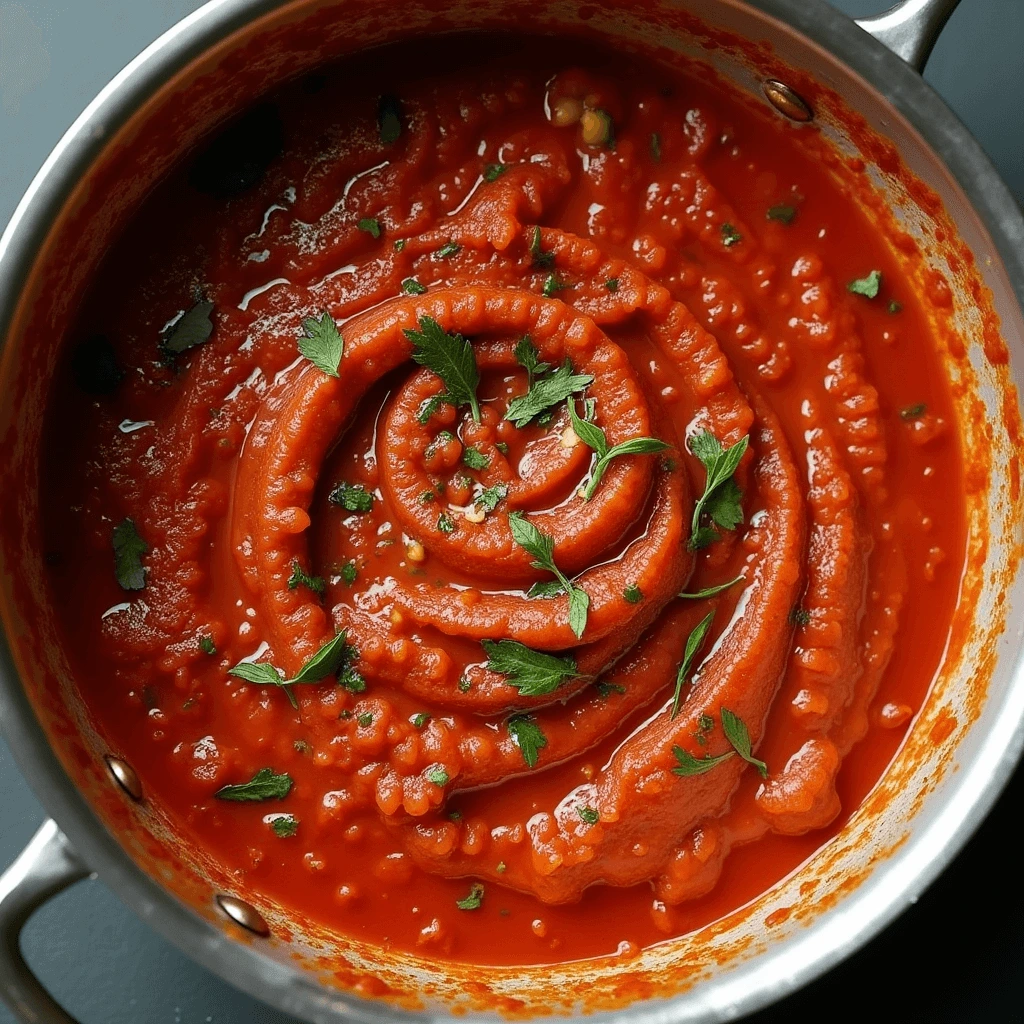A great plate of spaghetti is only as good as the sauce that covers it. While pasta provides the foundation, it’s the sauce that brings richness, depth, and personality to the dish. Whether you’re craving a bold marinara, a creamy Alfredo, or a simple garlic and olive oil blend, knowing the secrets to making flavorful spaghetti sauces can elevate your cooking from ordinary to exceptional. In this section, we’ll uncover the key ingredients, techniques, and flavor-boosting tips that make homemade sauces taste better than anything from a jar.
Secrets to Making Flavorful Spaghetti Sauces
Discover more sauce-making techniques from Serious Eats’ Guide to Pasta Sauces for flavor-packed inspiration.
Quick and easy homemade spaghetti sauce recipes (marinara, Bolognese, carbonara).
Making delicious spaghetti sauces at home doesn’t have to be time-consuming or complicated. With a few quality ingredients and simple techniques, you can whip up flavorful sauces that rival your favorite Italian restaurant. Below are three classic spaghetti sauce recipes—Marinara, Bolognese, and Carbonara—each offering a unique flavor profile and level of richness.
Marinara Sauce: Fresh, Bright, and Classic
Marinara is one of the simplest yet most beloved spaghetti sauces. It’s a tomato-based sauce that relies on fresh ingredients and a short simmer time, making it perfect for quick weeknight dinners.
Ingredients:
- Crushed or whole peeled tomatoes
- Fresh garlic and onion
- Olive oil
- Salt, black pepper, and a pinch of sugar
- Fresh basil or oregano
Quick Tip: Sauté the garlic and onion in olive oil first to release their flavor, then add tomatoes and simmer for 20–30 minutes. Add herbs at the end for a fresh finish.
Bolognese Sauce: Hearty and Meaty
Bolognese, or ragù, is a slow-cooked meat sauce that adds richness and depth to spaghetti. It traditionally includes ground beef or pork, vegetables, and tomato, cooked low and slow.
Ingredients:
- Ground beef (or a mix of beef and pork)
- Onion, carrot, and celery (finely chopped)
- Tomato paste or crushed tomatoes
- Red wine or broth
- Milk or cream for richness
Quick Tip: Brown the meat well for added flavor, then simmer all ingredients together for 45–60 minutes. Add milk near the end for a velvety texture.
Carbonara Sauce: Creamy Without Cream
Unlike other creamy sauces, traditional Carbonara is made without cream. It uses eggs, cheese, and pancetta to create a silky, flavorful sauce that clings beautifully to spaghetti.
Ingredients:
- Eggs (typically just yolks)
- Grated Parmesan or Pecorino Romano
- Pancetta or bacon
- Fresh ground black pepper
- Spaghetti cooking water
Quick Tip: Toss hot, drained spaghetti with the egg mixture and pancetta off the heat to avoid scrambling the eggs. Use reserved pasta water to adjust the consistency.
Tips to enhance flavor: slow simmering, fresh herbs, seasoning balance.
Creating a truly flavorful spaghetti sauce goes beyond just following a recipe—it’s about using the right techniques and ingredients that deepen and elevate taste. Whether you’re cooking a quick marinara or a rich bolognese, the following tips can help you bring out the full potential of your sauce and impress every palate at the table.
Slow Simmering Builds Depth
One of the best-kept secrets of exceptional spaghetti sauce is time. While some sauces can be made quickly, slow simmering allows flavors to meld and develop, especially in tomato- and meat-based sauces. As the sauce gently cooks over low heat, acidity mellows, herbs infuse, and the overall taste becomes more robust.
Tip: Let your sauce simmer for at least 30–60 minutes. For even deeper flavor, consider simmering it for 1–2 hours, stirring occasionally and adding a splash of water or broth if it thickens too much.
Fresh Herbs Add Brightness and Aroma
Herbs can completely transform your sauce by adding layers of freshness and aroma. While dried herbs are convenient, fresh herbs like basil, oregano, thyme, and parsley bring brighter, cleaner flavors. Add hardy herbs (like rosemary or thyme) early in the cooking process, and delicate herbs (like basil or parsley) just before serving to preserve their flavor.
Tip: Tear fresh basil by hand instead of chopping to avoid bruising the leaves and releasing bitterness.
Seasoning Balance Is Key
Even the best ingredients can fall flat without proper seasoning. The right balance of salt, pepper, acidity, and a touch of sweetness ensures your sauce tastes vibrant and not bland or overly tart. Taste frequently as you cook and adjust your seasoning gradually.
Tip: Add a small pinch of sugar to counterbalance acidic tomatoes, and finish with a drizzle of good-quality olive oil for a smooth mouthfeel.
How to adjust sauces for personal taste and dietary preferences.
One of the best things about making spaghetti sauce at home is the freedom to customize it to suit your personal taste and dietary needs. Whether you’re cooking for picky eaters, following a specific diet, or simply prefer certain flavors over others, a few smart tweaks can transform a standard sauce into something uniquely yours. Here’s how to make your spaghetti sauce more adaptable and inclusive.
Customize Flavor to Suit Your Palate
Not everyone enjoys the same flavor intensity. Some prefer bold and spicy, while others love something mild and sweet. Here’s how to tailor flavor easily:
- For more richness: Add a splash of red wine, a pat of butter, or grated Parmesan cheese.
- For more tang: Use balsamic vinegar, a squeeze of lemon juice, or a touch more tomato paste.
- To spice it up: Add red pepper flakes, chili powder, or a diced fresh chili.
- To mellow acidity: Stir in a pinch of sugar or a small amount of heavy cream to round out sharp tomato flavors.
Adapt for Dietary Restrictions
Many people need to follow certain dietary guidelines, and spaghetti sauces are incredibly versatile for this. Here’s how to make adjustments:
- Gluten-Free: Ensure your sauce is thickened naturally (via reduction) instead of using flour. Pair with certified gluten-free pasta.
- Vegan: Omit meat, cheese, and cream. Use plant-based oils, mushrooms, and nutritional yeast for depth and richness.
- Low-Sodium: Use fresh tomatoes or no-salt-added canned tomatoes and season the sauce yourself. Skip salty ingredients like cured meats.
- Dairy-Free: Swap out cream or butter with coconut milk, cashew cream, or olive oil for richness without the dairy.
Adjust Texture and Consistency
The ideal texture varies from person to person. Some like their sauce thick and chunky; others prefer smooth and pourable. You can:
- Thin a sauce by adding pasta water, broth, or crushed tomatoes.
- Thicken a sauce by simmering longer or stirring in a tablespoon of tomato paste.
- Blend it for a smoother finish, especially if you’re hiding veggies from kids.

